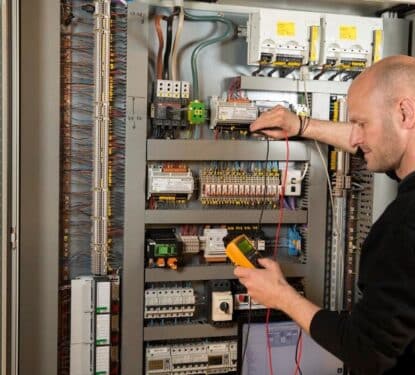In case there weren’t enough reasons for us to stop using fossil fuels to generate electricity, experts now claim that in addition to being environmentally unfriendly these energy sources also make us more vulnerable to catastrophic cyber attack in comparison to renewable alternatives.
Their theory is simple, fossil fuels are only effective through a centralized grid system whereas renewable energy offers the opportunity for a decentralized energy system. A successful attack on a centralized power grid could affect millions, if not hundreds of millions of people but if hackers brought down a microgrid it may only affect hundreds or thousands. Not only does this reduce the impact of power system hacks but it probably reduces the number of attempted attacks too, as these small targets would be less attractive to those wishing to create chaos.
“Advocates say the microgrid transformation of our electric infrastructure would make it more resilient to cyberattacks… and better able to handle electricity generated by renewable resources, such as wind and solar,” according to Boston’s NPR news station WBUR.
We know that renewable energy resources are greener and cleaner, supporting health while also reducing the speed of climate change and its impact on our environment. Perhaps this alone should be enough for us to make the shift away from dirty fossil fuels. The cost of renewable energy has also come down tremendously over the years. In September 2017 the US Department of Energy (DOE) announced that average cost of solar power reached its $1 per watt, or 6 cents per kilowatt hour, target a full three years ahead of schedule, making it competitive against fossil fuels. Despite this, dirty fuels still reign supreme within our power system.
Fear of catastrophic cyber attack could now be yet another driving force behind the switch to renewable energy and distributed energy resources but we have a relatively dirty centralized grid at the moment and we have avoided catastrophe so far. So how likely is such an attack?
According to US officials, Russian hackers have targeted the US energy grid as part of ongoing operations to damage the nation’s economy. “Since at least March 2016, Russian government cyber actors targeted government entities and multiple US critical infrastructure sectors, including the energy, nuclear, commercial facilities, water, aviation, and critical manufacturing sectors,” states an alert issued by the Department of Homeland Security and the FBI.
Follow to get the latest news and analysis about Smart Buildings in your inbox
According to Energy Secretary Rick Perry, these cyber attacks are “literally happening hundreds of thousands of times a day.” Whilst private news agency Bloomberg reports that the group responsible has been known to breach infrstructural systems to gather information that would allow “for a more advanced wave of attacks targeting industrial control systems that, if disabled, leave millions without power or water.”
Considering this, it may be logical to assume that our cyber security measures are standing up well the the onslaught of attacks but according to news agency GovTech, the fact we haven’t had a successful attack is more luck than prevention. “CEOs, CIOs, and CISOs pay billions for cyber security solutions only to discover that, at best, these technologies solely help in gathering information after an attack rather than stopping the attack from occurring,” the agency said. The approach has even widely become known as “patch and pray.”

Based on these reports, a successful attack could happen at any moment and if it does, on a centralized electricity system for example, it would not only lead to social disaster for those without power but also unprecedented economic collapse.
According to a report by Lloyd’s and the University of Cambridge’s Centre for Risk Studies, this kind of major attack on the electric grid in the US could potentially cost the economy between $243 billion and $1 trillion dollars. To put this into perspective, if you consider the financial cost of the three major hurricanes that hit the US last summer, these figures would be equivalent to 40 to 50 major hurricanes.
In case that isn’t enough to push us into the renewable-distributed age of electricity, military advisory CNA also remind us that continued reliance on foreign sources of fossil fuels represents a “national vulnerability.” Their report ‘Ensuring America’s Freedom of Movement: A National Security Imperative to Reduce U.S. Oil Dependence’ suggests that “a 30% reduction in our use of petroleum would significantly improve our national security.”
Whichever way you look you find reasons that support the shift to renewable energy and distributed energy resources. The industry is working hard to lower the cost of these green power sources while developing the technology to better enable decentralization and intelligence of our grid. However, national security, be it protecting from cyber, physical, or economic attacks, is the responsibility of the government - so, therefore, is supporting these new technologies and the shift away from fossil fuels.



